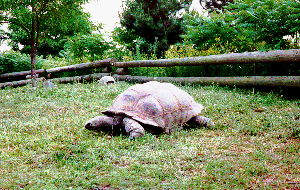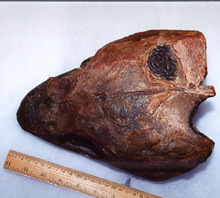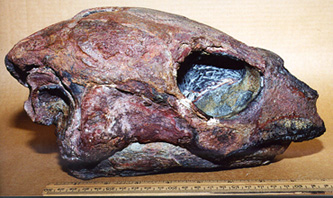Introduction to Testudines: The Turtles
Slow and Steady Wins the Race?

An Aldabra Tortoise, from the Herp Pictures Gallery

An Aldabra Tortoise, from the Herp Pictures Gallery
The group Testudines, popularly known as the turtles, is an ancient clade with a grand history. Because turtles seem so bulky, slow, and ungainly (at least on land), you may not think of the turtle body plan or turtle strategy as especially "successful", but if we use the age and diversity of the clade Testudines as a measure of evolutionary success, turtles are certainly a successful group -- they date back to the Triassic period, and today are represented by a modest 200+ living species (number of species is commonly used as an index of diversity). As the moral of Aesop's fable "The Tortoise and the Hare" tells us, slow and steady wins the race...at least sometimes. Today, however, many turtle species are not doing so well, and such endangered species as the Green Sea Turtle, Chelonia mydas, have become international symbols for environmentalists and other vanguards of biodiversity conservation.


As you will learn if you delve further into the history of this group, the proper name for the extant (living) turtles is Chelonia; Testudines refers to the Chelonia and some of their extinct relatives known from the extentive fossil record of turtles. Chelonia is the single surviving branch of the Anapsida, a group of amniotes with unfenestrated skulls (see the page on anapsid morphology for more details).


